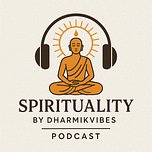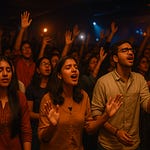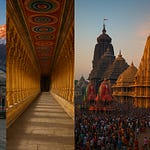Festival window: Sunday, 28 September 2025 – Thursday, 2 October 2025
Durga Puja is one of India’s most celebrated festivals, honoring the divine feminine power in her many forms. Across the country, temples dedicated to Shakti attract lakhs of devotees during this sacred period. Below is a detailed guide to the eight most revered temples, their histories, myths, rituals, and the mystical aura that surrounds them.
The Flow of the Five Days
Shashthi (Sun, Sept 28): Bodhon (invocation of the goddess), Bilva Nimantran.
Saptami (Mon, Sept 29): Nabapatrika snan (ritual bathing of nine sacred plants symbolizing the goddess), first round of pushpanjali (floral offerings).
Ashtami (Tue, Sept 30): Kumari Puja (worship of a pre-pubescent girl as the goddess), grand anjali, Sandhi Puja with 108 lamps at the cusp of Ashtami and Navami.
Navami (Wed, Oct 1): Maha aarti, dhunuchi nach (incense dance), chanting of hymns and mantras.
Dashami (Thu, Oct 2): Sindoor khela (married women apply vermilion to each other and the goddess), followed by immersion of the idol (Bisarjan), symbolizing Durga’s return to Mount Kailash.
1. Dakshineswar Kali Temple, Kolkata (West Bengal)
History: Built in 1855 by philanthropist Rani Rashmoni, the temple is a masterpiece of Bengal’s navaratna architecture. The temple complex also houses twelve Shiva shrines and a Radha–Krishna temple.
Spiritual importance: Associated with the mystic saint Ramakrishna Paramahamsa, who served here as head priest and experienced profound spiritual realizations.
Mystique: The temple resonates with the energy of Kali as the fierce protector, but also as the tender mother.
During Durga Puja: Special Kali archanas, devotional songs, and elaborate evening rituals attract devotees in great numbers.
2. Kalighat Kali Temple, Kolkata (West Bengal)
History: One of the 51 Shakti Peethas, where the right toe of Sati is said to have fallen. The temple in its present form was built in the early 19th century.
Unique features: The idol of Kali with three huge eyes and a long protruding tongue is unlike any other representation in India.
Mystery: The temple is a hub of Shakta Tantra, often associated with esoteric practices.
During Durga Puja: Though dedicated to Kali, it witnesses massive crowds of Durga devotees, blending local tradition with mainstream Puja celebrations.
3. Kamakhya Temple, Guwahati (Assam)
History: An ancient center of Tantric practices, dedicated to the goddess Kamakhya, the embodiment of desire and fertility. The sanctum houses a rock fissure symbolizing the goddess’s womb.
Mystical aura: Famous for the Ambubachi Mela, marking the goddess’s annual menstrual cycle, when the temple remains closed for three days before reopening with great celebration.
During Durga Puja: Special rituals honor Shakti as both the cosmic mother and the primal source of creation. Pilgrims come from across India, adding to the vibrancy of Navratri.
4. Vaishno Devi Temple, Katra (Jammu & Kashmir)
History: A sacred cave shrine where the goddess is worshipped as three natural rock formations (pindis) symbolizing Mahakali, Mahalakshmi, and Mahasaraswati.
Legend: It is believed that Vaishno Devi, an incarnation of Shakti, meditated here until she merged into the rocks as eternal energy.
Pilgrimage: A 13 km trek from Katra leads to the shrine; completing the yatra requires visiting Bhairon Temple, symbolizing victory over obstacles.
During Durga Puja: Navratri here is celebrated with extraordinary grandeur, with special aartis, bhajans, and round-the-clock darshan.
5. Ambaji Temple, Gujarat
History: Known as the Arasuri Ambaji temple, it is one of the most important Shakti Peethas. Worship is centered not on an idol but on a sacred Sri Yantra placed in the sanctum.
Festivals: The temple hosts grand celebrations during Navratri, with traditional Garba and Dandiya dances performed in devotion to the goddess.
Mystery: The absence of an idol intensifies the temple’s spiritual aura, as the yantra is veiled and never displayed openly.
During Durga Puja: Devotees throng the temple, combining worship with vibrant cultural performances.
6. Maya Devi Temple, Haridwar (Uttarakhand)
History: Dating back to the 11th century, this shrine is one of the three ancient Siddh Peethas of Haridwar, where Sati’s heart and navel are believed to have fallen.
Significance: The presiding deity, Maya Devi, is Haridwar’s guardian goddess.
Rituals: During Durga Puja, devotees perform special anjalis and seek blessings at the temple before taking a dip in the holy Ganga.
Mystical element: The temple is one of the few places in India where three forms of Shakti—Maya, Kali, and Kamakhya—are worshipped together.
7. Nartiang Durga Temple, Meghalaya
History: A 600-year-old temple located in the Jaintia Hills, believed to be the spot where Sati’s left thigh fell.
Unique tradition: The temple was patronized by the Jaintia kings and continues to blend local Khasi–Jaintia customs with Shakta rituals.
During Durga Puja: While most of Meghalaya celebrates other festivals, this temple becomes the epicenter of Durga worship in the state, with traditional animal sacrifices and unique tribal offerings.
8. Tripura Sundari Temple, Udaipur (Tripura)
History: Built in 1501 CE by Maharaja Dhanya Manikya, it is one of the holiest Shakti Peethas where Sati’s right foot is believed to have fallen.
Architecture: The temple is uniquely tortoise-shaped (Koorma Peetha), symbolizing stability and strength in Vedic architecture.
Worship: The goddess Tripura Sundari is worshipped here in the form of a black stone idol, alongside a smaller idol known as Chhoto-Ma.
During Durga Puja: The temple draws devotees from across the Northeast, with special shringar rituals, chanting, and cultural festivities.
Ritual Highlights During Durga Puja
Bodhon (invocation): The goddess is ritually invoked into the idol or sacred pot on Shashthi.
Nabapatrika snan: A symbolic marriage of nine sacred plants, representing Durga’s powers, bathed in river water on Saptami.
Kumari Puja: Worship of a young girl as a living form of the goddess, signifying purity and divinity.
Sandhi Puja: Performed at the junction of Ashtami and Navami, with 108 oil lamps and sacred chants.
Sindoor Khela: Married women smear each other with vermilion on Dashami before bidding farewell to the goddess.
Bisarjan: The immersion of idols marks Durga’s return to her celestial abode, accompanied by processions and drumming.
Travel & Pilgrimage Tips for 2025
Best circuits:
Eastern/Northeastern Circuit: Kolkata (Dakshineswar, Kalighat) → Guwahati (Kamakhya) → Tripura (Tripura Sundari) → Meghalaya (Nartiang).
Northern/Western Circuit: Haridwar (Maya Devi) → Katra (Vaishno Devi) → Gujarat (Ambaji).
Crowds: Book transport and accommodation well in advance. Expect long queues, especially on Ashtami and Navami.
Cultural add-ons: Many temples combine puja rituals with folk traditions—such as Garba in Gujarat, tribal offerings in Meghalaya, and dhunuchi dances in Bengal.
Durga Puja 2025 is not just a festival—it is a journey into India’s sacred geography, myth, and cultural diversity. Each of these eight temples tells a story of faith, devotion, and mysticism. Visiting them during this period offers not only darshan of the goddess in her myriad forms but also a deeper experience of India’s living spiritual heritage.











